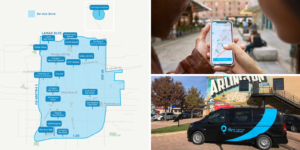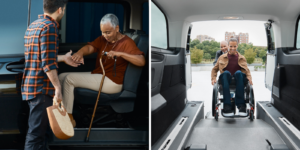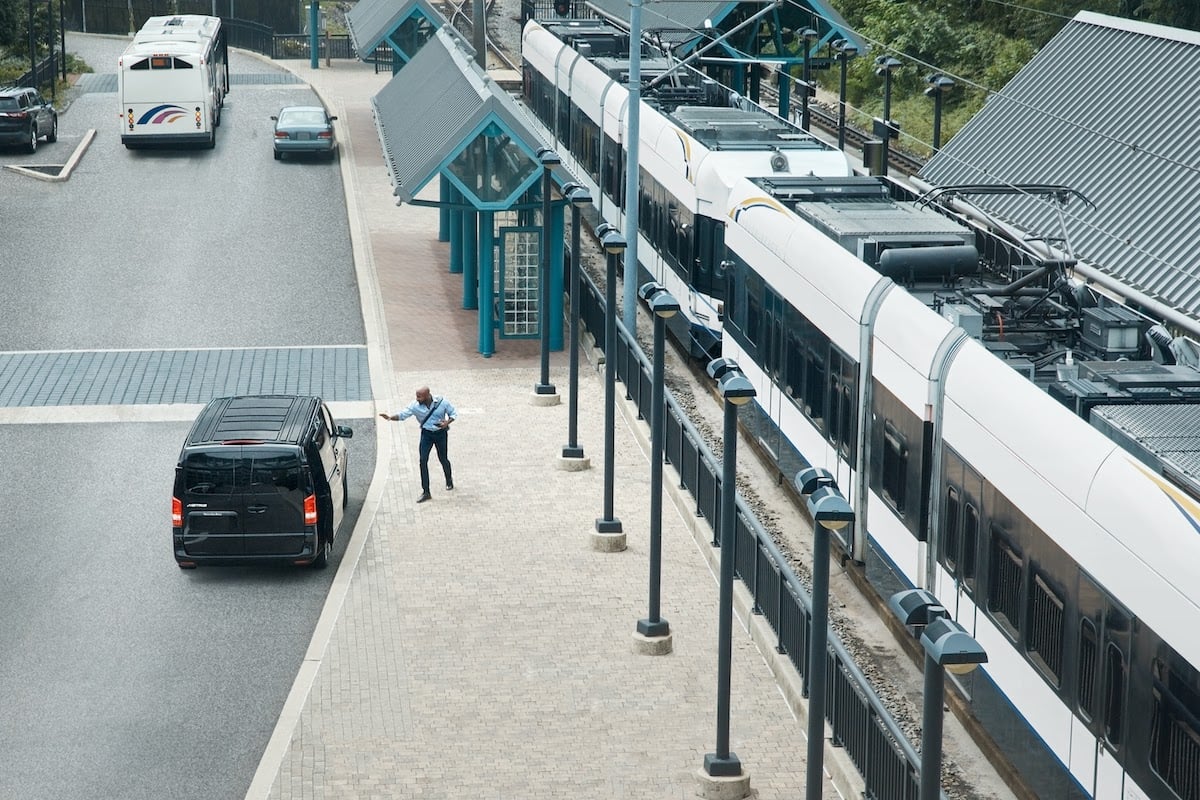For a majority of Americans, the idea of leaving your personal vehicle at home and taking public transportation isn’t just a long and complex challenge, it may not even be an option. While traditional modes of public transit like trains and buses work in some of the nation’s most urban environments, owning a personal vehicle is oftentimes a necessity rather than a choice.
Here’s a quick snapshot: 45% of Americans have no access to public transit at all. The rest must contend with limited routes and aging equipment. In fact, the Federal Transit Administration recently found that 40% of buses and 25% of rail transit are in “marginal or poor” condition. Meanwhile, municipalities continue to prioritize cars, widening streets and expanding highways to accommodate a fleet that is parked 95% of the time. Congestion is so bad that average traffic speeds in New York City dropped 30% from 2010 to 2016.
Transportation is the number one polluter by sector, accounting for 29% of all U.S. greenhouse gas emissions. And the rise of ride-hailing services like Uber and Lyft are making all of these problems worse. Most solutions — from light rail to high-speed rail to bike lanes to more walkable urban areas — are attractive in theory, but they require very large investments and an equally large portion of political will. At the moment, it is unclear whether public demand will force the hand of municipalities currently unwilling or unable to make the huge capital investments required.
At the same time, our current moment calls for change. As we adapt to needs for physical distancing, sanitary improvements, and contact tracing as governments look for ways to slow the spread of COVID-19, mobility sits at the heart of our ability to get back to work and return to new routines. Technology has the opportunity to support necessary changes in public transit which can be adapted in real-time, as needs change.

What is microtransit?
For all of these reasons, many communities are considering a new alternative that combines advances in mobile technology and artificial intelligence to deliver a “microtransit” network that can be deployed immediately and is relatively inexpensive compared to big-ticket projects. Microtransit, sometimes referred to as DRT (Demand Responsive Transport), is essentially a unique blend of the ride-hailing concept and the familiar city bus.
Riders request a pickup through an app, get picked up quickly and within a couple blocks of their location, share the ride with others in a multi-passenger vehicle that is configured to adhere to local safety guidelines, and get dropped off either within a couple blocks of their destination or at their door. Pickups and dropoffs often occur within a short walking distance from the requested locations to maximize routing efficiency, eliminate lengthy detours, and keep trip times closer to that of a private vehicle.
What makes the concept work is an intelligent algorithm running behind the scenes, which considers all incoming ride requests and quickly calculates the most efficient routes vehicles can use to pick up riders heading in the same direction. This “curb-to-curb” approach can work in urban, suburban, and rural areas, using existing roads. It does not require communities to lay track or purchase fleets of trains or large city buses.

Big advantages for any community.
Immediate pickup, requested via an app, is incredibly convenient, and the model helps keep costs, traffic congestion, and the resulting vehicle emissions much lower than a private car. Together, cost and convenience drive demand, giving riders a much better alternative to waiting for a fixed-route bus that may take 90 minutes to make a trip that would take less than 30 minutes in a car, should the rider live near a bus or train station at all. On-demand microtransit is more flexible than fixed route systems, opening up transportation access to a wider range of people than those who already live near existing stops.
The technology that powers microtransit also has the ability to rapidly adapt, which cities and transportation agencies are quickly realizing is more important than ever. As communities look for ways to support the safety of their constituents and help them return to a more mobile daily life, microtransit can incorporate changing regulations like the frequency of vehicle cleanings, caps on the number of people who can share a ride, and even help facilitate tracking interactions between riders – a potentially necessary step in curbing future outbreaks of the coronavirus.
In the face of the pandemic, cities with existing microtransit networks, like Berlin, were able to quickly adjust their networks in order to limit vehicle capacities and address changing regulatory needs. Other cities preparing to launch on-demand transit networks like in Sevenoaks, UK and Timaru, New Zealand, were able to do so quickly, launching services well ahead of schedule, allowing for essential transportation in their communities. Even cities without prior microtransit plans were able to build something from scratch: in just a few days, cities like Abu Dhabi built a new microtransit network, proving how agile and flexible these new modes of public transportation can be.

Helping those most in need of mobility, who currently lack public transit options.
In addition, on-demand microtransit is better able to serve older people and those with disabilities. Using public transit can be very difficult for these riders, which is why they often rely on specialized mobility services that must be requested anywhere from one to three days in advance.
For example, West Sacramento On-Demand is now averaging more than 3,000 rides per week; about 14 percent of the rides are taken by residents who are older or who have disabilities. As a direct result of the program, 66% or riders say they feel safer getting around town, and 59% say they have a greater sense of independence. Notably, over 40% say they now drive alone less often.
It’s important to note that microtransit is not a replacement of fixed-route systems. Rather, it can be used in an “all of the above” approach. In areas where bus ridership is already high, vehicles are well-utilized, and costs-per-passenger are low, microtransit can be used to reduce dependence on single passenger ride-hailing services. It can also be deployed to effectively extend the footprint of public transit, bringing riders from outlying areas to transit hubs, serving as a “first-and-last mile” solution to boost ridership on commuter rail, for example, which may become even more important as cities lift shelter-in-place orders and get back to work.
And, on-demand technology can be used to optimize fixed lines, supporting key activities like seat booking to manage demand, and shifting underutilized vehicles to support peak ridership in other locations. Microtransit fleets are already operating in a number of cities, from Cupertino to Newton to Sydney. At scale, microtransit has the capacity to deliver an immediate drop in congestion, taking cars off the road, helping to reduce greenhouse gas emissions, and support safe travel in communities around the world.




%206.png?width=71&height=47&name=The%20Buzz%20Blog%20Hero%20(1750%20x%201200%20px)%206.png)